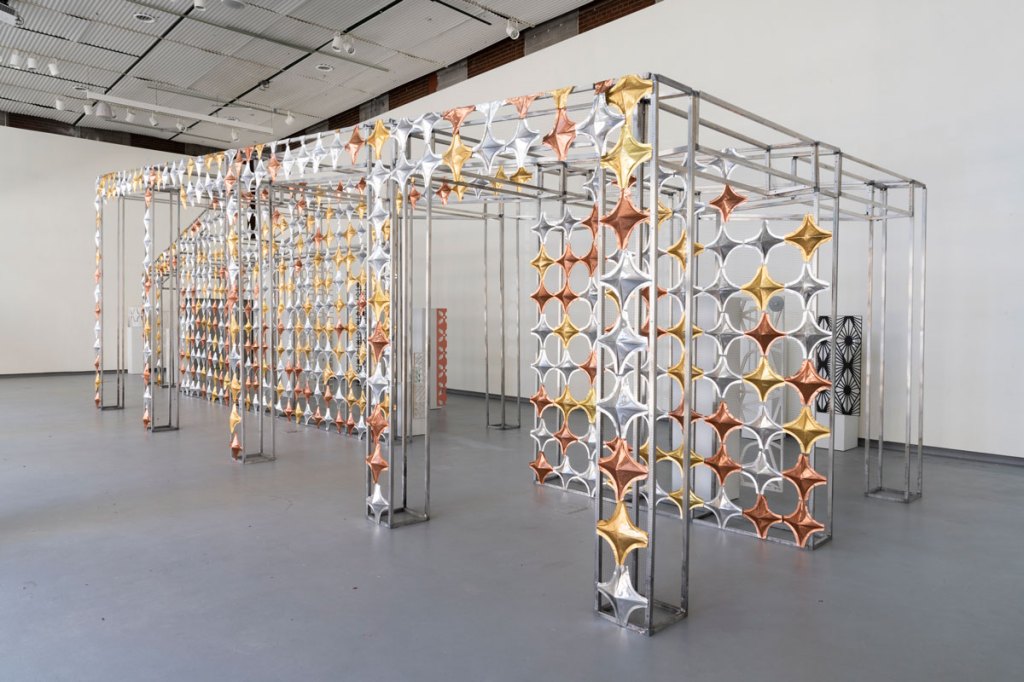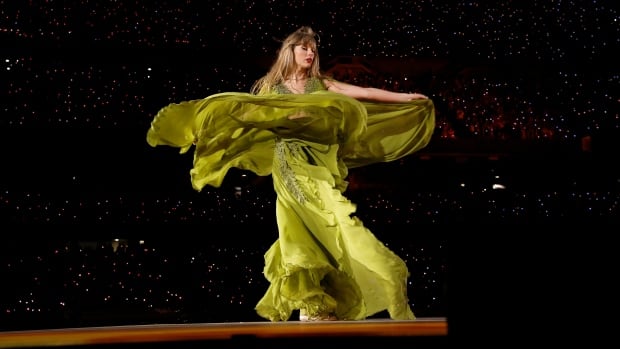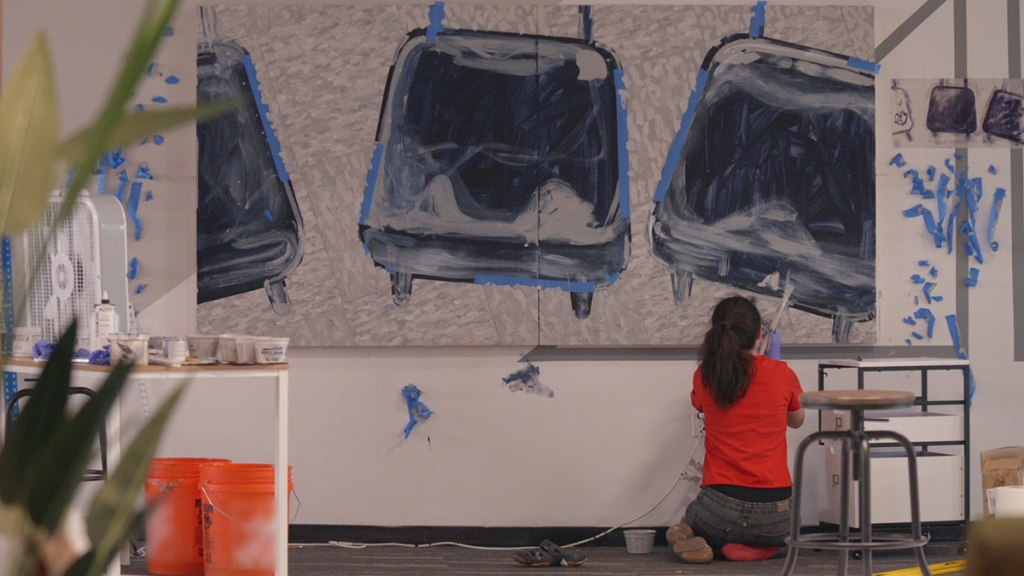Edra Soto’s work likely appears familiar to you. Though the Chicago-based artist has been commissioned for numerous public artworks in recent years, that is probably not the reason why. Instead, it is simply because her decade-long project, “GRAFT,” draws on architectural motifs—repeating stars, circles, and other shapes— ubiquitous in Puerto Rico that have since been exported all over the world.
In her work, Soto, who was born in Puerto Rico, highlights the cultural appropriation of these patterns, which were originally found on cast-iron fences outside homes in Puerto Rico.
“You can find them everywhere,” Soto told ARTnews recently, ahead of two solo exhibitions opening this month. “You can find them at Starbucks, at a department store. I realized they exist all over the world. They’re not only exclusive to Puerto Rico. But the story that I’m telling is the story of Puerto Rico.”
When visitors arrive at Puerto Rico’s San Juan Airport, among the first things they encounter is Spanish colonial era architecture. One element, the garita (an overhanging turret or sentry box), has even been incorporated into the logo of the Puerto Rico Tourism Company, in essence becoming a symbol synonymous with the island, according to Soto. But, for her, that symbolism is inextricably connected to Puerto Rico’s status as an unincorporated territory of the United States and as the world’s oldest colony.
“This is a colonial and military architectural element that lives in Puerto Rico,” she said of the motifs.
When Soto started “GRAFT” around ten years ago, she was searching for a way to express the story of her 1998 migration from Puerto Rico to Chicago at the age of 27.
“I’m in a constant back and forth—that is a big part of my life,” she said. “It wasn’t possible not to ask myself, How can I represent this condition of constantly going from one place to another?”

Edra Soto.
Photo Steph Murray
Soto said her mind kept returning to the domestic architecture of Puerto Rico, how homes—and space—are delineated, where the demarcations between public and private begin and end.
“This is something that I grew up with—it’s very much a part of my lexicon,” she said. “The house where I grew up is located in a middle-class, gated community in Puerto Rico, and most of these houses have these particular decorative motifs. I started thinking about the cultural value of these motifs.”
Each iteration of “GRAFT” manifests as a site-specific installation presenting a version of these architectural barriers that respond directly to the space in what she calls “architectural interventions.”
“In my imagination, I’m graphing—I’m transplanting—this particular pattern from Puerto Rico to a territory in the United States,” she said. “It’s my own way of inhabiting a space.”

Detailed installation view of “Edra Soto: Destination / El Destino, A decade of Graft,” 2023, at Hyde Park Art Center, Chicago.
Photo Eugene Tang/Courtesy the artist
When Soto began researching the patterns, she came across an essay by Puerto Rican architect Jorge Ortiz Colom, who wrote about “the African influence in the design, build, and edification of Puerto Rico.” Soto found the text revelatory as mainstream Puerto Rican culture rarely, if ever, celebrates links to Africa.
For “Destination/El Destino: a decade of GRAFT,” her upcoming exhibition at Chicago’s Hyde Park Art Center, which opens on April 22, Soto wanted to mark her decade-long engagement with the project. Honoring the anniversary proved challenging, however, as many of her interventions are ephemeral.
“The way that I generate work is that I don’t keep a body of work. I will repurpose the material, so I have a lot of scraps and parts left behind,” she said. “I started thinking about how those fragments can tell the story of the ten years of GRAFT.”

Edra Soto, Casa Isla, 2022, installation view, at Chicago Botanic Garden.
Photo James Prinz/Courtesy the artist
One of those works is Casa Isla (2022), a 50-foot by 14-foot sky-blue structure that appeared to rise out of the water at the Chicago Botanic Garden. Sections of that installation now form the main structure at Hyde Park Art Center: “I tried to bring a formal element to do the exhibition,” Soto said, noting that the gallery at Hyde Park brought a new challenge “as an architectural intervention there’s not a lot to react to because it’s a white cube.”
Her “GRAFT” project evolved in 2018, when Soto created an installation for LA gallery Luis De Jesus at Untitled Miami Beach that introduced images in viewfinders that appear to hide beneath the cut-out sections of her decorative motifs. Those photographs were drawn from an archive Soto has amassed for years of the motifs appearing in the real world.
“The pictures themselves trace my travel, my Puerto Rican experience, and also allow me to build a narrative through the different images,” she said. “The decorative patterns were not enough for me, so the images allow me to take things further.”

Edra Soto, GRAFT, 2022, installation view, at Whitney Museum, New York.
Photo James Prinz
For the Whitney Museum’s landmark exhibition “no existe un mundo poshuracán: Puerto Rican Art in the Wake of Hurricane Maria,” which closes April 23, Soto presented an iteration of the viewfinders. However, this time, the viewfinders showed images of the Puerto Rican sky, trees, and nature after the hurricane hit. Soto said she wanted to show “the transformation of the landscape” to combat the graphic images of destruction and death that had become commonplace.
For the latest exhibition at Hyde Park, the viewfinders will show photos of past iterations of “GRAFT,” in order to “instigate a certain engagement” from the viewer in a direct and intimate way.
Important to “GRAFT,” and Soto’s practice generally, is an archive of research materials, essays, and responses to her work commissioned from architects, historians, political writers, poets, artists, and more, all of which is available on her website.
Recently, Soto started painting again, incorporating elements from “GRAFT” into wall-hung abstract canvases, which she said grew out a wave of grief. Several of the paintings will feature in Soto’s solo show at Morgan Lehman in New York, which opens Saturday.

Installation view of “Edra Soto: Dos Cuerpos,” 2023, at Morgan Lehman, New York.
Courtesy the artist and Morgan Lehman, New York
“When you feel grief, I think you have to do things to either finish it or deal with it,” Soto said. “I think a way I deal with it is through my work. It’s a very direct expression that allows me to express myself in the most basic way.”
Throughout “GRAFT” and the rest of her work runs a throughline of nostalgia. For Soto, it is intended to collapse the past, present, and future.
“People think of [these patterns] as something of the past, but it still exists,” she said. “The patterns are present in our culture. They hold a history that can be celebrated.”



